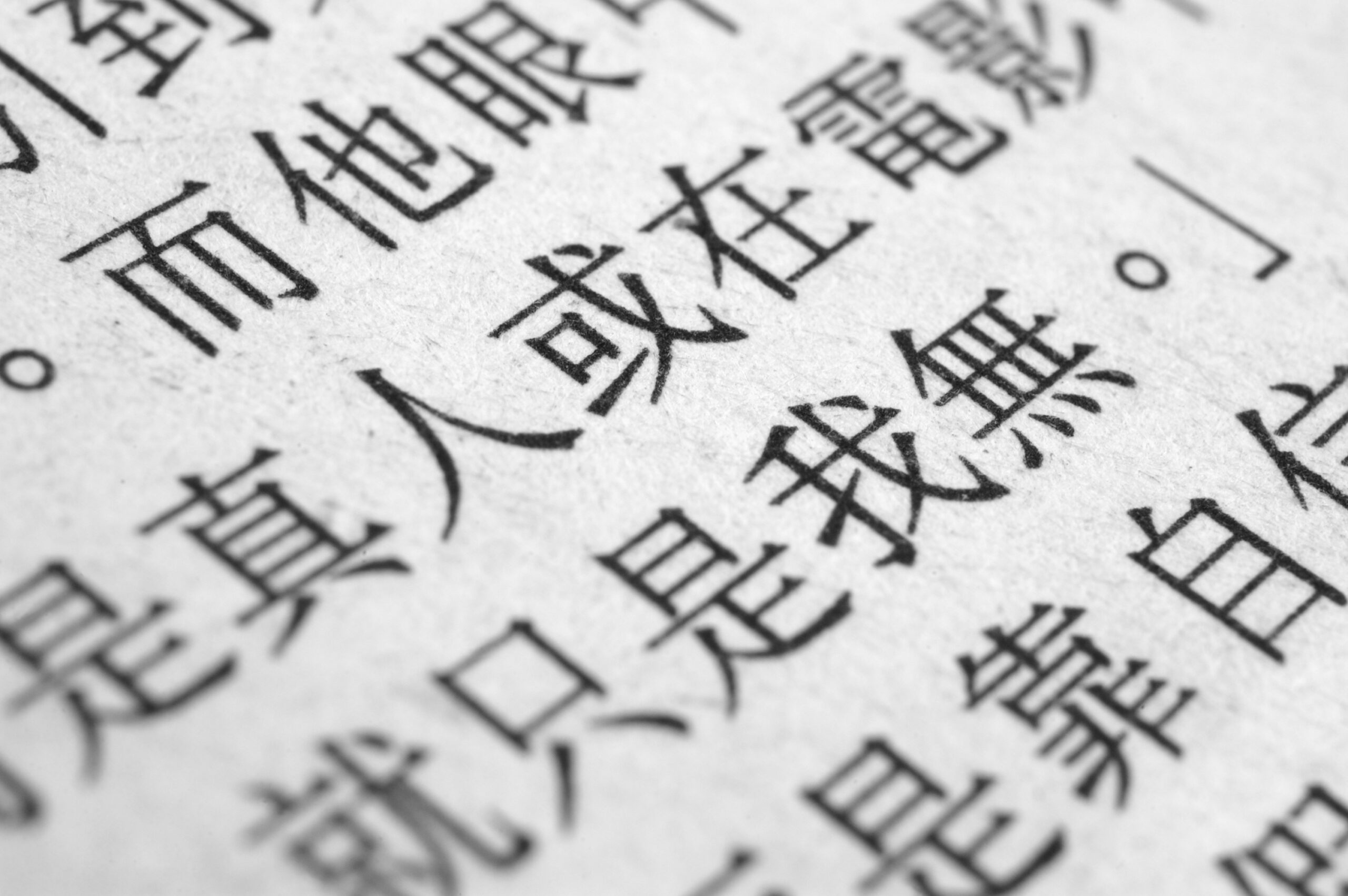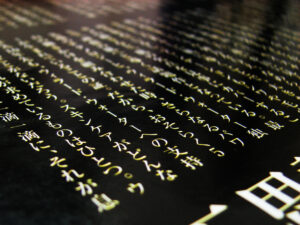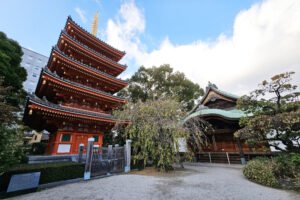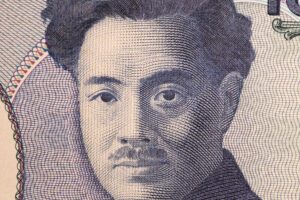Hiragana, one of the three scripts used in the Japanese writing system, serves as a fundamental building block for Japanese literacy. It is often the first script taught to children and language learners alike. Understanding Hiragana is crucial not just for mastering the language but also for appreciating the cultural nuances embedded within it. This article will explore the various aspects of Hiragana, from its historical origins to its essential role in modern Japanese communication.
Understanding Hiragana: The Heart of Japanese Writing
Hiragana is a phonetic script consisting of 46 basic characters, each representing a distinct syllable. Unlike Kanji, which comprises logographic characters derived from Chinese, Hiragana is used primarily for grammatical functions and native Japanese words. Each character in Hiragana is simple and elegant, allowing for a seamless flow of writing. This smoothness is emblematic of the Japanese aesthetic, which values natural beauty and simplicity.
The script is employed in various contexts, from children’s books to professional literature. Its use extends beyond mere phonetics; Hiragana is often employed in conjunction with Kanji to facilitate understanding of complex characters. For example, Hiragana can be used to indicate the pronunciation of Kanji through furigana, assisting learners and readers alike. By grasping Hiragana, one gains access to a vast array of Japanese literature and media.
Hiragana also represents a significant cultural element of Japan. It is intimately tied to the identity of the Japanese people, serving not only as a means of communication but also as an artistic expression. The fluidity of Hiragana characters has inspired countless works of art and calligraphy, reflecting the deep connection between language and culture.
Furthermore, Hiragana is primarily used for inflectional endings in verbs and adjectives, making it indispensable for understanding sentence structure. This phonetic component allows learners to piece together sentences and grasp grammatical nuances vital for effective communication in Japanese.
In sum, Hiragana is more than just an alphabet; it is the essence of Japanese writing, encapsulating the language’s beauty, structure, and cultural significance. Its role as the heart of Japanese literacy cannot be overstated.
The Historical Origins of Hiragana and Its Development
The origins of Hiragana can be traced back to the Heian period (794-1185) when the Japanese began to develop their writing system. Before Hiragana, the Japanese primarily used Classical Chinese characters for written communication. While these characters were effective for conveying complex ideas, they were not suited for the native sounds of the Japanese language. As a result, educated women, who were often excluded from formal schooling, began to create their own phonetic script to express their thoughts and feelings.
Hiragana evolved from cursive forms of Kanji known as "manyogana." Manyogana used Chinese characters to represent Japanese sounds, but this system was cumbersome. Over time, the simplified and stylized characters that emerged from manyogana transformed into what we recognize today as Hiragana. This evolution was not just a phonetic solution but also a cultural rebellion against the elitism associated with Kanji.
The development of Hiragana was also influenced by the desire for a uniquely Japanese identity, particularly during periods of cultural introspection. As the Japanese began to embrace their language and literature, Hiragana became a means to express the subtleties of Japanese thought and emotion. The first known literary works in Japanese, such as "The Tale of Genji," prominently featured Hiragana, highlighting its critical role in the growth of Japanese literature.
Throughout the centuries, Hiragana has undergone some changes in style and form, but its fundamental structure has remained consistent. Today, Hiragana is an integral part of Japanese education, where children learn it alongside basic vocabulary and grammar. Its historical journey reflects the evolution of the Japanese language itself, making it an essential component of literacy.
In essence, the historical origins of Hiragana reveal a rich tapestry of cultural significance and linguistic necessity. The development of this script mirrors Japan’s journey toward a unique literary identity, making it a cornerstone of Japanese writing.
The Role of Hiragana in Japanese Language Structure
Hiragana serves as a crucial element in the grammatical structure of the Japanese language. It is primarily used to write particles, which are essential in sentence construction. Particles indicate the grammatical relationships between words, often signifying subject, object, or direction. For example, the particle "が" (ga) indicates the subject of a sentence, while "を" (wo) marks the direct object. Understanding these particles is vital for comprehending the syntax of Japanese sentences.
Additionally, Hiragana is used to inflect verbs and adjectives. In Japanese, the form of a verb or adjective can change depending on tense, politeness, and mood. These inflections are typically written in Hiragana, allowing for a clear representation of the verb’s grammatical function. For instance, the verb "たべる" (taberu), meaning "to eat," can be transformed into "たべた" (tabeta) for the past tense. This use of Hiragana reinforces the fluidity of the language and enhances its expressive capabilities.
Hiragana also allows for the creation of compound words and phrases, further enriching the language. By combining Hiragana with Kanji, speakers can convey nuanced meanings and create a more comprehensive understanding of concepts. This flexibility is particularly useful in everyday communication, where context often dictates meaning.
Moreover, the use of Hiragana alongside Kanji aids in the smooth reading of text. Since many Kanji characters can have multiple pronunciations, Hiragana serves as a phonetic guide. This combination not only facilitates comprehension but also promotes fluency, as readers can more easily navigate complex written material.
In summary, Hiragana plays a pivotal role in shaping the grammatical landscape of the Japanese language. Its function in marking particles, inflecting verbs and adjectives, and aiding in the creation of compound words underscores its importance in achieving fluency and comprehension in Japanese.
Hiragana’s Relationship with Kanji and Katakana
Hiragana is one of three scripts in the Japanese writing system, with Kanji and Katakana being the other two. Each script serves a distinct purpose, but they are often used in tandem to convey meaning effectively. Hiragana is primarily used for native Japanese words and grammatical elements, while Kanji represents borrowed Chinese characters that convey specific meanings and concepts.
The relationship between Hiragana and Kanji is particularly intricate. While Kanji is essential for denoting meaning, Hiragana provides the phonetic component that helps readers pronounce the characters. This dual system allows for a rich interplay of sounds and meanings, which is fundamental to understanding and appreciating the nuances of the language. For example, the word "日本" (Nihon), meaning "Japan," is written in Kanji, but its pronunciation is indicated with Hiragana as "にほん."
Katakana, the third script, is utilized primarily for borrowed words from foreign languages, scientific terms, and emphasis. It comprises the same set of syllables as Hiragana but is characterized by its angular and sharp appearance. Katakana is often used in commercial contexts, such as advertising and branding, where a distinct visual impact is desired.
The coexistence of Hiragana, Kanji, and Katakana allows for a vibrant and flexible written language. This trilingual system offers richness in expression and style, accommodating both traditional and modern needs. For instance, a newspaper article might use Kanji for key concepts, Hiragana for grammatical markers, and Katakana for foreign names.
In conclusion, the relationship between Hiragana, Kanji, and Katakana is essential for a comprehensive understanding of Japanese writing. Each script contributes to the overall tapestry of the language, enabling speakers and writers to convey complex ideas with clarity and elegance.
How Hiragana Facilitates Language Learning for Beginners
For individuals embarking on their journey to learn Japanese, Hiragana serves as an accessible entry point. As a syllabary, it simplifies the learning process compared to the complexities of Kanji, which requires memorizing thousands of characters. By mastering Hiragana, beginners can quickly start forming words and sentences, fostering a sense of accomplishment that motivates further study.
Hiragana is often the first script introduced in language classes and textbooks. With only 46 basic characters, learners can focus on pronunciation and writing without the overwhelming task of memorizing dozens of complex characters. This foundational knowledge sets the stage for tackling more advanced elements of the language, including Kanji and vocabulary.
Additionally, Hiragana is used extensively in children’s literature and educational materials. Many children’s books feature Hiragana prominently, making it easier for young learners to engage with the text. This practice not only reinforces literacy skills but also helps to build confidence in reading and writing. As children become comfortable with Hiragana, they can gradually introduce Kanji, thereby expanding their language proficiency.
The phonetic nature of Hiragana allows learners to focus on mastering pronunciation early in their studies. This benefit is particularly significant, as correct pronunciation is crucial for effective communication in Japanese. By practicing Hiragana, beginners can develop a strong auditory foundation that will aid them as they progress to more complex aspects of the language.
Furthermore, the use of Hiragana in digital communication and social media allows learners to practice their skills in a modern context. Many apps and online platforms adopt Hiragana to make language learning interactive and engaging. These resources provide opportunities for practice that are easily accessible and enjoyable, contributing to a well-rounded language learning experience.
In summary, Hiragana serves as a vital tool for facilitating language learning for beginners. Its simplicity, phonetic nature, and prevalence in educational materials make it an essential component of the Japanese language acquisition process.
The Importance of Hiragana in Everyday Japanese Usage
In daily life, Hiragana is ubiquitous in various forms of communication, from street signs to menus to personal correspondence. Its prominence in everyday usage underscores its role as a bridge between spoken and written Japanese. Understanding Hiragana is essential for navigating the language in real-world contexts, making it a crucial skill for anyone living or traveling in Japan.
Hiragana is often used in informal settings, such as text messages and social media, where brevity and clarity are essential. Its phonetic nature makes it a popular choice for quick communication, allowing users to convey thoughts and emotions effectively. This informal usage reflects the adaptability of Hiragana and its relevance in contemporary Japanese society.
Moreover, Hiragana is employed in educational contexts, such as language schools and children’s programs, to teach literacy skills. The script’s simplicity facilitates learning, enabling students to progress to more advanced topics like reading Kanji and developing vocabulary. This foundational role in education makes Hiragana an indispensable element of Japanese language acquisition.
In literature, Hiragana enriches the reading experience by providing additional context and emotional depth to the text. Authors often use Hiragana to convey subtle nuances or to indicate how a character should be perceived. This stylistic choice enhances the reader’s engagement and understanding of the narrative, showcasing the script’s flexibility in literary expression.
Additionally, Hiragana plays a vital role in the world of Japanese calligraphy and artistic expression. The fluidity and grace of Hiragana characters lend themselves well to various forms of visual art, making it a favored choice among artists. This artistic dimension further emphasizes Hiragana’s significance in Japanese culture and identity.
In conclusion, Hiragana is deeply woven into the fabric of everyday Japanese life. Its prevalence in communication, education, literature, and art highlights its importance as a foundational element of literacy and cultural expression.
Common Hiragana Characters and Their Pronunciations
Focusing on common Hiragana characters provides learners with a practical foundation for reading and writing in Japanese. The basic Hiragana set consists of 46 characters, each representing a specific syllable. Here are some of the most frequently used characters and their pronunciations:
- あ (a) – The vowel sound ‘a,’ as in "father."
- い (i) – The vowel sound ‘i,’ as in "machine."
- う (u) – The vowel sound ‘u,’ as in "flute."
- え (e) – The vowel sound ‘e,’ as in "bed."
- お (o) – The vowel sound ‘o,’ as in "go."
- か (ka) – The consonant sound ‘k’ combined with ‘a.’
- き (ki) – The consonant sound ‘k’ combined with ‘i.’
- く (ku) – The consonant sound ‘k’ combined with ‘u.’
- け (ke) – The consonant sound ‘k’ combined with ‘e.’
- こ (ko) – The consonant sound ‘k’ combined with ‘o.’
These characters form the backbone of many Japanese words and phrases. For example, "かばん" (kaban) means "bag," integrating the characters か, ば, and ん. By mastering these foundational characters, learners can begin to decode simple sentences and express their thoughts.
In addition to these basic characters, Hiragana also features diacritics, which modify the sounds of certain consonants. For instance, the addition of a dakuten (゛) changes か (ka) to が (ga), altering the pronunciation. Understanding these variations is essential for achieving fluency in the language.
Regular practice with Hiragana characters through writing and reading exercises can significantly enhance retention and recall. Flashcards, writing drills, and mobile apps that focus on Hiragana recognition can be effective tools in this process.
In summary, familiarizing oneself with common Hiragana characters and their pronunciations is a crucial step in learning Japanese. This foundational knowledge opens the door to more complex language skills and enables effective communication.
Tips for Mastering Hiragana: Study Techniques and Tools
Effective study techniques are essential for mastering Hiragana and integrating it into daily language practice. One of the most useful methods is regular writing practice, which helps reinforce character recognition and recall. By dedicating time each day to write out the characters, learners can build muscle memory that aids in fluency.
Utilizing flashcards is another effective way to study Hiragana. Flashcards allow for repetitive learning, enabling learners to test their recall in a structured manner. Digital flashcard applications, like Anki or Quizlet, can enhance this process by incorporating spaced repetition algorithms that optimize learning efficiency.
Incorporating Hiragana into everyday life is also beneficial. Labeling household items with their Hiragana names or keeping a diary in Hiragana can help reinforce vocabulary and improve writing skills. This immersive approach creates a rich learning environment and fosters a deeper connection to the language.
Engaging with multimedia resources can also enhance the learning experience. Watching Japanese shows, listening to music, or reading children’s books in Hiragana can provide context and practical application of the script. This exposure to real-world usage reinforces understanding and pronunciation.
Participating in language exchange programs or conversation groups can further deepen one’s grasp of Hiragana. Practicing with native speakers allows learners to apply their knowledge in interactive settings, facilitating both verbal and written communication.
In conclusion, mastering Hiragana requires a combination of effective study techniques and consistent practice. By incorporating writing exercises, flashcards, multimedia resources, and conversation opportunities, learners can enhance their proficiency in Hiragana and, consequently, their overall Japanese language skills.
Hiragana in Modern Japanese Media and Literature
Hiragana remains a prevalent force in modern Japanese media, serving as a crucial element in literature, television, film, and online content. In literature, authors use Hiragana to convey character emotions, provide phonetic guidance for complex Kanji, and create a unique tone. Its fluidity lends itself well to prose and poetry, allowing writers to express subtle nuances effectively.
In children’s literature, Hiragana plays a vital role in helping young readers develop their reading skills. Many children’s books are written primarily in Hiragana, making them accessible to early learners. This focus on Hiragana in educational materials reflects its importance in building a solid foundation for literacy in Japanese.
The world of manga also showcases the significance of Hiragana. While many manga series incorporate Kanji, Hiragana is frequently used for dialogue, sound effects, and character thoughts. This blend creates an engaging reading experience, making it easier for readers of varying proficiency levels to enjoy the story.
In the realm of digital media, Hiragana is used extensively in social media, blogs, and online forums. Whether in casual interactions or professional articles, Hiragana facilitates communication and expression across various platforms. Its prevalence in digital spaces highlights its relevance in contemporary society and culture.
Additionally, Hiragana’s artistic beauty is celebrated in modern calligraphy and graphic design. Artists often incorporate Hiragana characters into their work, further bridging the gap between language and visual art. This fusion reflects the enduring cultural significance of Hiragana in Japan.
In summary, Hiragana is a vital component of modern Japanese media and literature. Its versatility and accessibility allow for rich expression and creativity, making it an integral part of contemporary Japanese language and culture.
Overcoming Challenges in Hiragana Learning Process
While learning Hiragana is essential for mastering Japanese, it does come with its challenges. One of the most common obstacles is the initial unfamiliarity with the characters. For beginners, distinguishing between similar-looking characters can lead to confusion and frustration. This confusion can be mitigated through focused practice and repetition, helping learners build confidence in their recognition abilities.
Another challenge arises when learners encounter the sounds associated with Hiragana. Japanese phonetics can differ significantly from those in other languages, and some sounds may be unfamiliar. This can lead to difficulties in pronunciation. To overcome this, learners should engage in auditory practice, listening to native speakers and mimicking their pronunciation to develop an accurate accent.
The transition from Hiragana to Kanji can also be daunting. While Hiragana is simpler, the complexity of Kanji can feel overwhelming. To ease this transition, learners should gradually introduce Kanji alongside Hiragana study. Incorporating Kanji that frequently accompanies Hiragana can create a sense of familiarity and connection between the two scripts.
Inconsistent practice can hinder progress as well. Like any language, regular engagement is critical in mastering Hiragana and retaining knowledge. Setting aside dedicated study time each day, even if only for a brief period, can significantly enhance retention and fluency.
Finally, learners may struggle with motivation, especially when faced with the challenges of language acquisition. To stay motivated, learners should set achievable goals, celebrate small accomplishments, and engage with the language in enjoyable ways, such as watching Japanese films or reading manga.
In conclusion, while learning Hiragana presents challenges, these obstacles are surmountable with determination and effective strategies. By employing consistent practice, auditory training, gradual Kanji integration, and maintaining motivation, learners can successfully navigate the Hiragana learning process.
Hiragana’s Influence on Japanese Culture and Identity
Hiragana holds a unique place in Japanese culture and identity, reflecting the language’s deep connection to the nation’s history and values. As a script developed by and for the Japanese people, Hiragana embodies a sense of cultural pride and uniqueness. Its simplified forms stand in contrast to the complexity of Kanji, symbolizing a more accessible and relatable aspect of the language.
Culturally, Hiragana is often associated with femininity and emotional expression. Historically, women primarily used Hiragana to express their thoughts and creativity, especially during the Heian period. This association underscores the script’s role in literary expression and its historical significance in giving voice to women in Japanese society.
The aesthetic beauty of Hiragana also plays a crucial role in Japanese art and calligraphy. The graceful curves of Hiragana characters lend themselves to artistic interpretation, making them a popular choice for visual art. This artistic dimension enhances Hiragana’s cultural significance, as it transcends mere functionality and becomes a medium for creative expression.
Hiragana is also deeply embedded in traditional Japanese customs and practices. For instance, in the realm of calligraphy, mastering Hiragana is considered a foundational skill. The beauty of the characters is celebrated, and events centered around calligraphy often highlight Hiragana’s elegance and cultural importance.
In contemporary society, Hiragana continues to be a symbol of Japanese identity. Its use in education, media, and daily life ensures its relevance in modern communication








